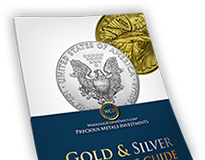- Gold $0.00 $0.00
- Silver $0.00 $0.00
- Platinum $0.00 $0.00
- Palladium $0.00 $0.00
Pricing:
| QUANTITY | E-CHECK/WIRE | CREDIT CARD |
|---|---|---|
| Any | $1,650.00 | $1,718.81 |

Get Our Free
Gold & Silver
Investor's
Guide
Description:
Owning a Liberty Gold Eagle coin can appeal for various reasons. These could include its designs, high gold content and significance as a historical artifact. Getting this coin in an attractive condition would also be desirable - and you could be able to transform that into a reality by placing an order with us. The Liberty Gold Eagle - or Liberty Head Gold Eagle, as you may have seen it called - debuted in 1838. The face value, shown as "TEN D." and indicating $10 somewhat explains why the coin is called an eagle; that refers to a denomination base-unit comprising $10 of U.S. currency.
Other coins, you may have noticed, have been called eagles - such as double-eagles, half-eagles, and quarter-eagles. The denominations of those - respectively, $20, $5, and $2.50 - are calculated on the eagle's basis. You should also be careful not to mistake the Liberty Gold Eagle coin for the gold bullion coin that has circulated nationally since 1986, the American Gold Eagle. Alternatively, the Liberty Gold Eagle could be mistaken for the Turban Head Eagle or Indian Head Eagle. Both of these eagles match the Liberty variant in denomination, but occupied the Liberty coin's space respectively before and after that coin's staggeringly long run of production.
Now that we have helped to clarify what the Liberty Gold Eagle isn't, here's a closer analysis of what it is. In a Christian Gobrecht-made design, it depicts a coronet-wearing Liberty looking leftward, and with hair knotted and bound behind her head. A beaded ribbon secures that hair in place. There was a 34-year gap between the Turban Head coin's discontinuation and the Liberty Gold Eagle's debut. This can be attributed to the Turban Head's contained gold surpassing the disc's face value. Hence, it was too attractive for that coin to be exported rather than kept in the country.
Before the Liberty Gold Eagle's arrival, the Coinage Act of 1834 lowered how much gold would be in it; therefore, exporting a Gold Eagle would not be as much of a boon this time. This Liberty Gold Eagle will have gold accounting for 90 percent of the metal. Copper will be what consists of the remaining 10 percent. This metal makeup could pique investors' interest; gold, in isolation, can keep its value more reliably than legal tender paper and coin money. While a political or economic upheaval could sink a currency's value, this would not apply so strongly in the case of gold when it is assessed strictly as a metal.
Coin Highlights:
- Minted in the year 1878
- US - Philadelphia Mint
- 0.4838 oz of gold
- MS61 condition graded by NGC
Specifications:
| Product Type | Coin |
|---|---|
| Coin Series | Pre-33 Gold |
| Purity | 90% |
| Mint/Refinery | U.S. Mint - Philadelphia |
| Metal Type | Gold |
| Face Value | $10 |
| Grade | MS61 |
| Coin Type | Certified |
| Modern or Historical | Pre-33 |
| Grade Service | NGC |
| Year | 1878 |
| Metal Weight | 0.4838 troy oz |








